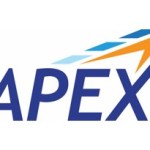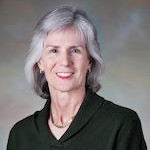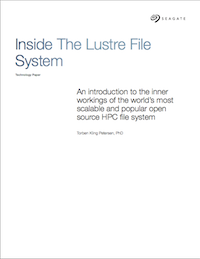NNSA’s next-generation Penguin Computing clusters based on Intel SSF are bolstering “capacity” computing capability at the Tri Labs. “With CTS1 installed in April, the NNSA scientists can continue their stewardship research and management on some of the most advanced commodity clusters the Tri Labs have acquired, ensuring the safety, security, and reliability of the nation’s nuclear stockpile.”
NNSA Unleashes Advanced Computing Capabilities to Serve Researchers at Three National Labs
ISC 2016 Keynote to Showcase Women’s Excellence in Computational Science
Today the ISC 2016 conference announced that their Tuesday keynote session will highlight contributions from female researchers and scientists in advancing the field of computational science. “This year, Dr. Jacqueline H. Chen, a distinguished member of technical staff at Sandia National Laboratories, has been invited to keynote on Tuesday, June 21, on the topic of advancing the science of turbulent combustion using petascale and exascale simulations.”
Dona Crawford Retires from LLNL
Dona Crawford, Associate Director for Computation at NNSA’s Lawrence Livermore National Laboratory (LLNL), announced her retirement last week after 15 years of leading Livermore’s Computation Directorate. “Dona has successfully led a multidisciplinary 1000-person team that develops and deploys world-class supercomputers, computational science, and information technology expertise that enable the Laboratory’s national security programs,” LLNL Director Bill Goldstein said. “Dona’s leadership in high performance computing has been instrumental in bringing a series of world-class machines to the Laboratory.”
With APEX, National Labs Collaborate to Develop Next-Gen Supercomputers
Today Los Alamos, Lawrence Berkeley, and Sandia national laboratories announced the Alliance for Application Performance at Extreme Scale (APEX). The new collaboration will focus on the design, acquisition and deployment of future advanced technology high performance computing systems.
Sandia’s Z machine Helps Pinpoint Age of Saturn
How old is Saturn? Researchers are using Sandia’s Z machine to find out.
HPC People on the Move – Long, Hot Summer Edition
Dr. Lewey reports on who’s jumping ship and moving on up in high performance computing.
Video: Towards Exascale Simulation of Turbulent Combustion
“Exascale computing will enable combustion simulations in parameter regimes relevant to next-generation combustors burning alternative fuels. The first principles direct numerical simulations (DNS) are needed to provide the underlying science base required to develop vastly more accurate predictive combustion models used ultimately to design fuel efficient, clean burning vehicles, planes, and power plants for electricity generation.”
Sandia’s Mark Taylor Receives DOE Secretary’s Honor Award
Today Sandia National Laboratories announced that researcher Mark Taylor has received the U.S. Department of Energy (DOE) 2014 Secretary’s Honor Award — the department’s highest non-monetary employee recognition — for his work as chief computational scientist for DOE’s Accelerated Climate Modeling for Energy (ACME) executive council team.
HPC People on the Move: May Edition
Dr. Lewey Anton reports on who’s jumping ship and moving on up in HPC. In this edition, Sumit Gupta leaves Nvidia for a new post as VP of HPC & OpenPOWER Operations at IBM.
Geophysicist Marianne Walck named VP of Sandia’s California laboratory
Today Sandia National Laboratories announced the appointment of Marianne Walck as vice president of Sandia’s California laboratory.











